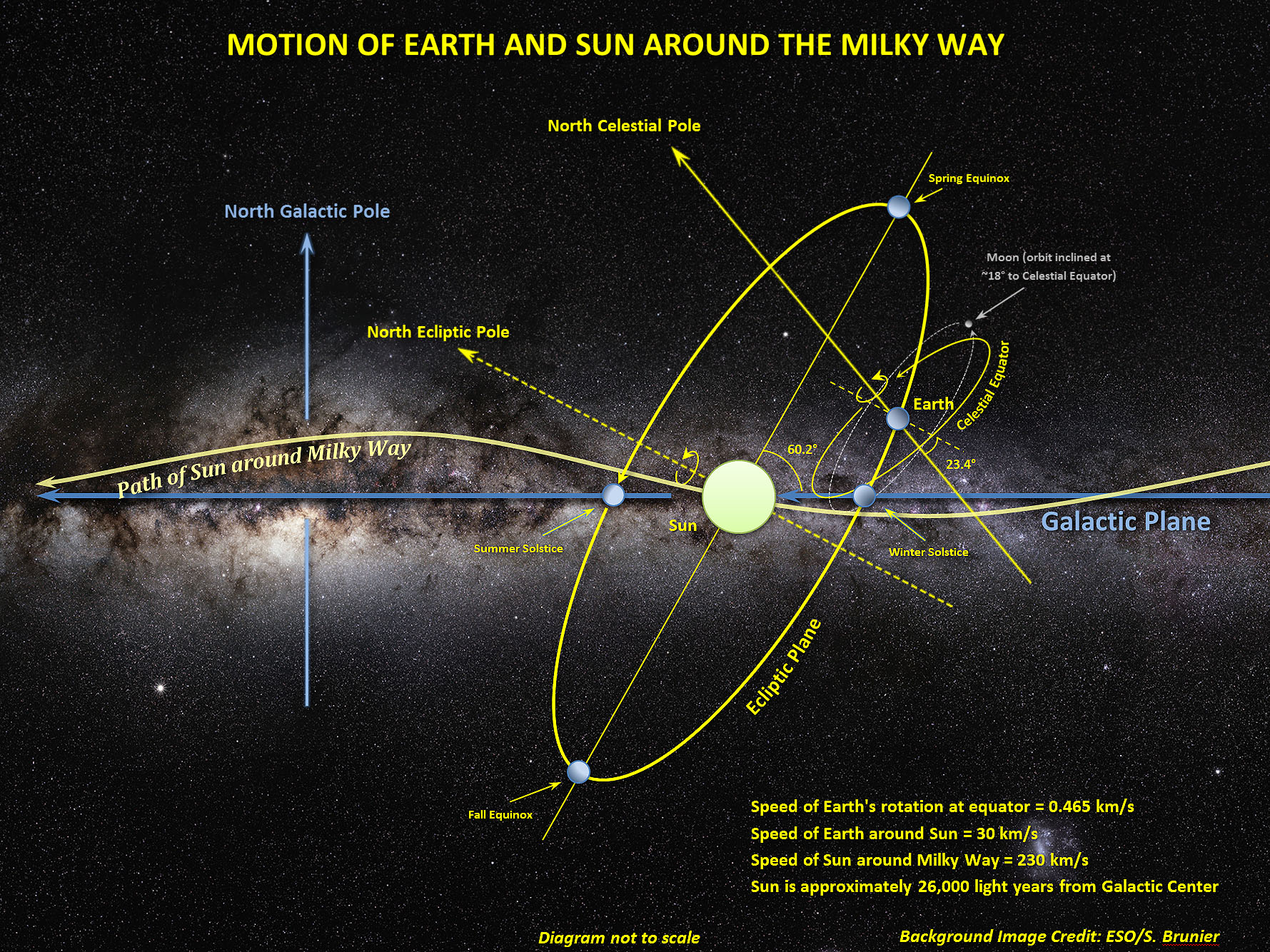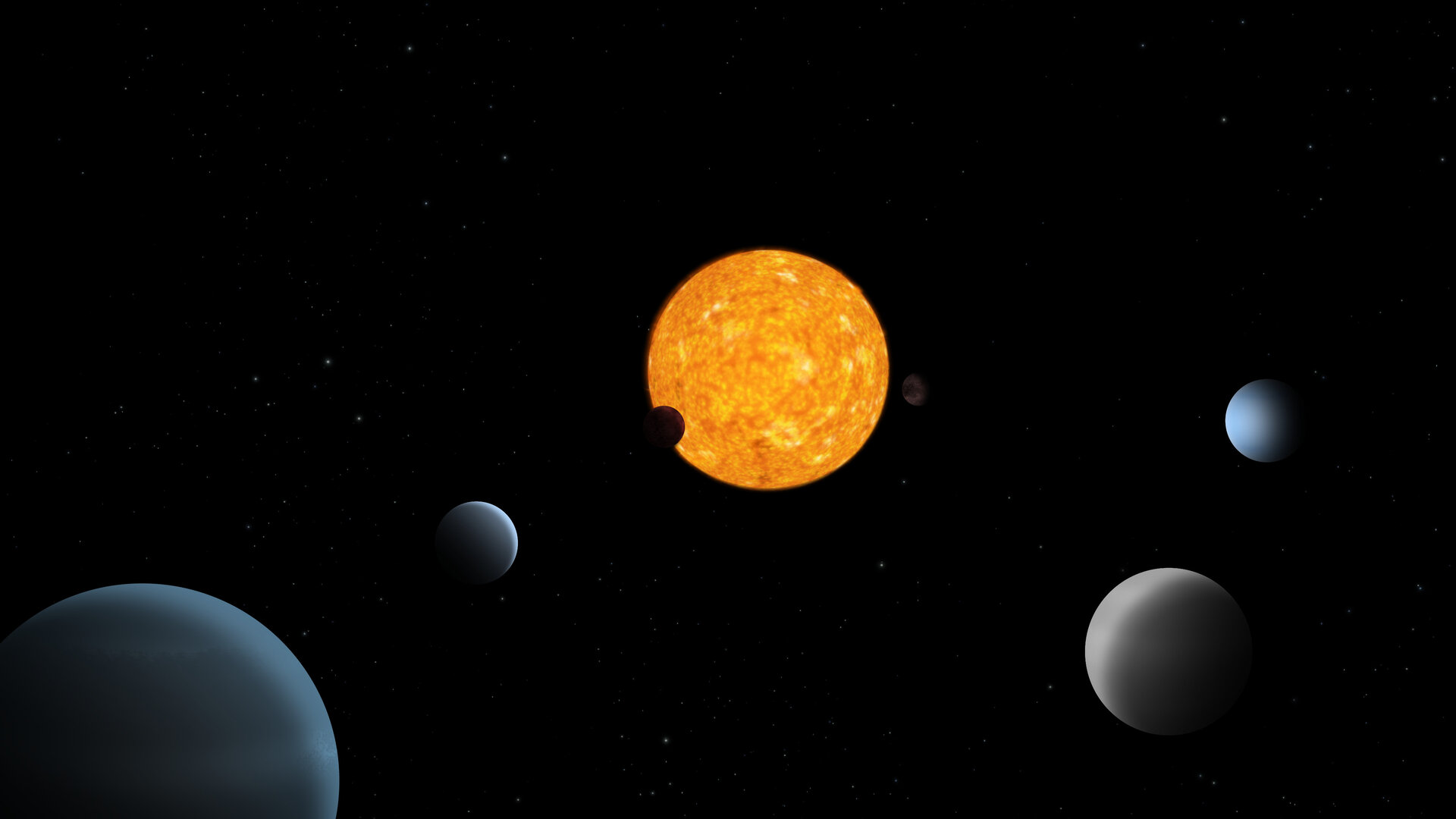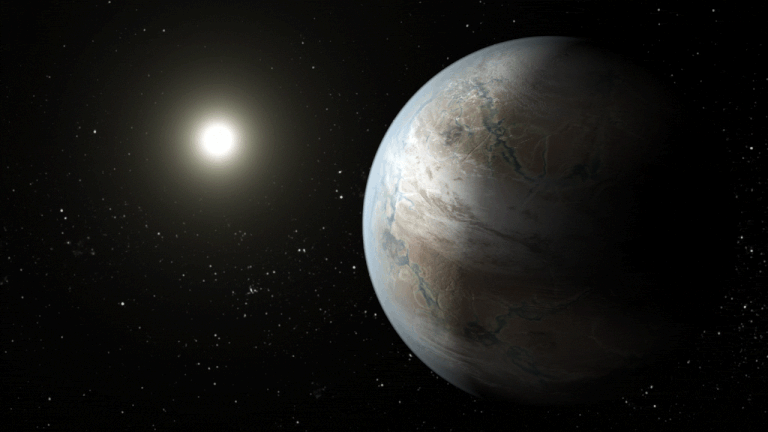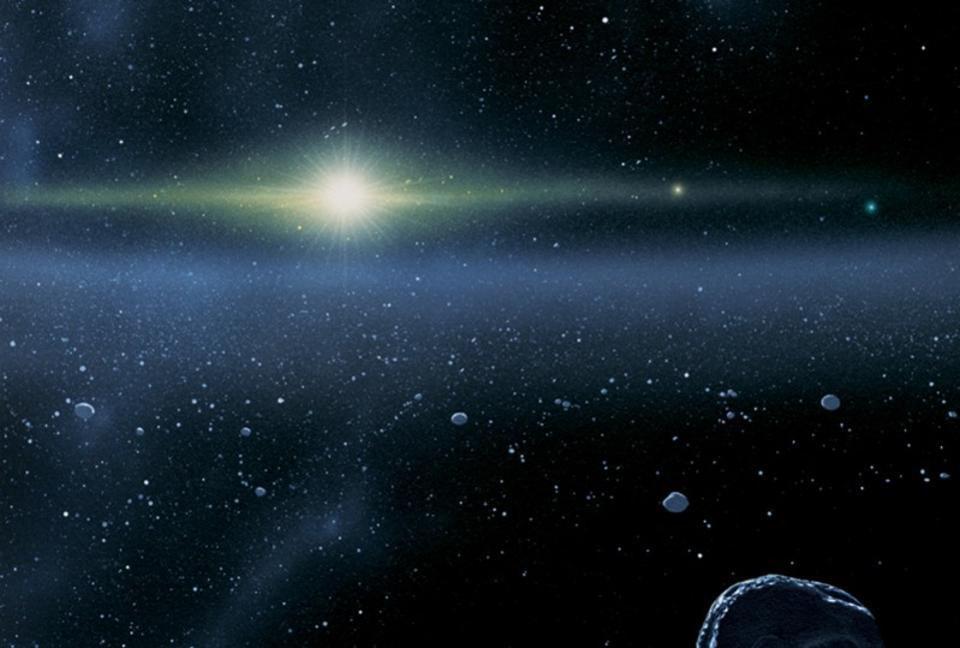Ask Ethan: Are “super-Earths” really the most common planets in the Universe?
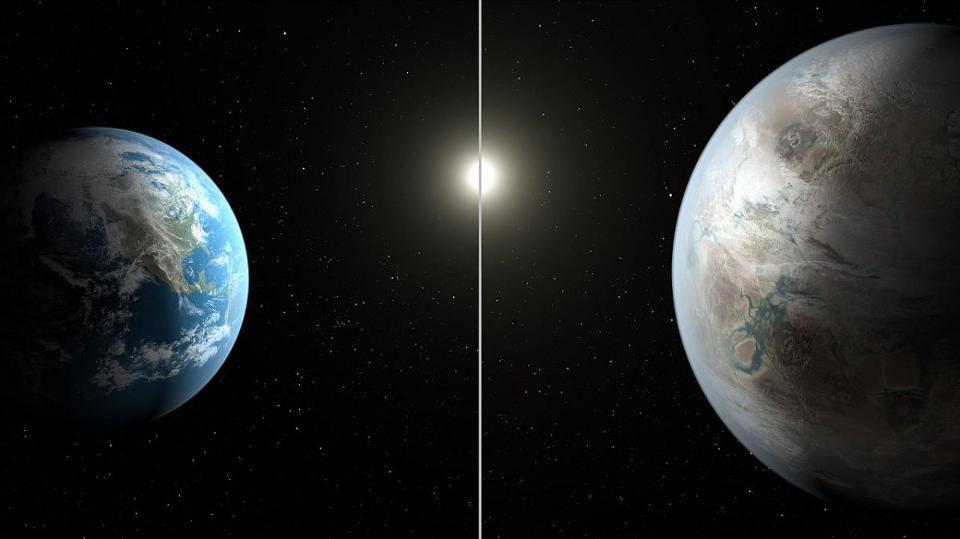
- As we close in on 5,000 confirmed exoplanets, we surprisingly discovered that the most common type, super-Earths, are absent from our Solar System.
- However, does this mean that super-Earths are really the most common class of planet in the Universe, or is this just a reflection of what our tools can easily find?
- Even more surprisingly, it turns out that “super-Earth” isn’t a good description of what planets actually are. There are only three planetary classes, and “super-Earth” isn’t one of them.
When it comes to the question of what’s out there in the Universe, it’s vital to remember that what we see isn’t necessarily what we get. In astronomy, as in any observational science, you’re only going to see what your instruments and tools are capable of detecting, and you’re going to detect greater numbers of the objects you’re most sensitive to. Since 1990, humanity has leapt from only knowing of the planets within our Solar System to nearly 5,000 confirmed exoplanets, with at least another 4,000 planetary candidates from Kepler, K2, and TESS awaiting confirmation.
In a surprising find, the most abundant type of planet discovered so far is neither a gas giant nor a rocky planet, but rather a new class of planet between the two: best known as super-Earths. But are super-Earths really the most common type of planet in the Universe, or are our current data and capabilities fooling us? That’s what Victor Taveras asks, wanting to know just how ubiquitous super-Earths really are:
“I see it said that Super Earths are the most common planets we have discovered. People make it sound like this is something important and it is a controversy that the “most common planets out there are not present in our own solar system.” My question is […] isn’t this just a measurement artifact?”
The great danger in any scientific endeavor is that of fooling yourself with biased, bad, or incomplete data. And yes, that’s absolutely a legitimate worry here. Let’s find out why.
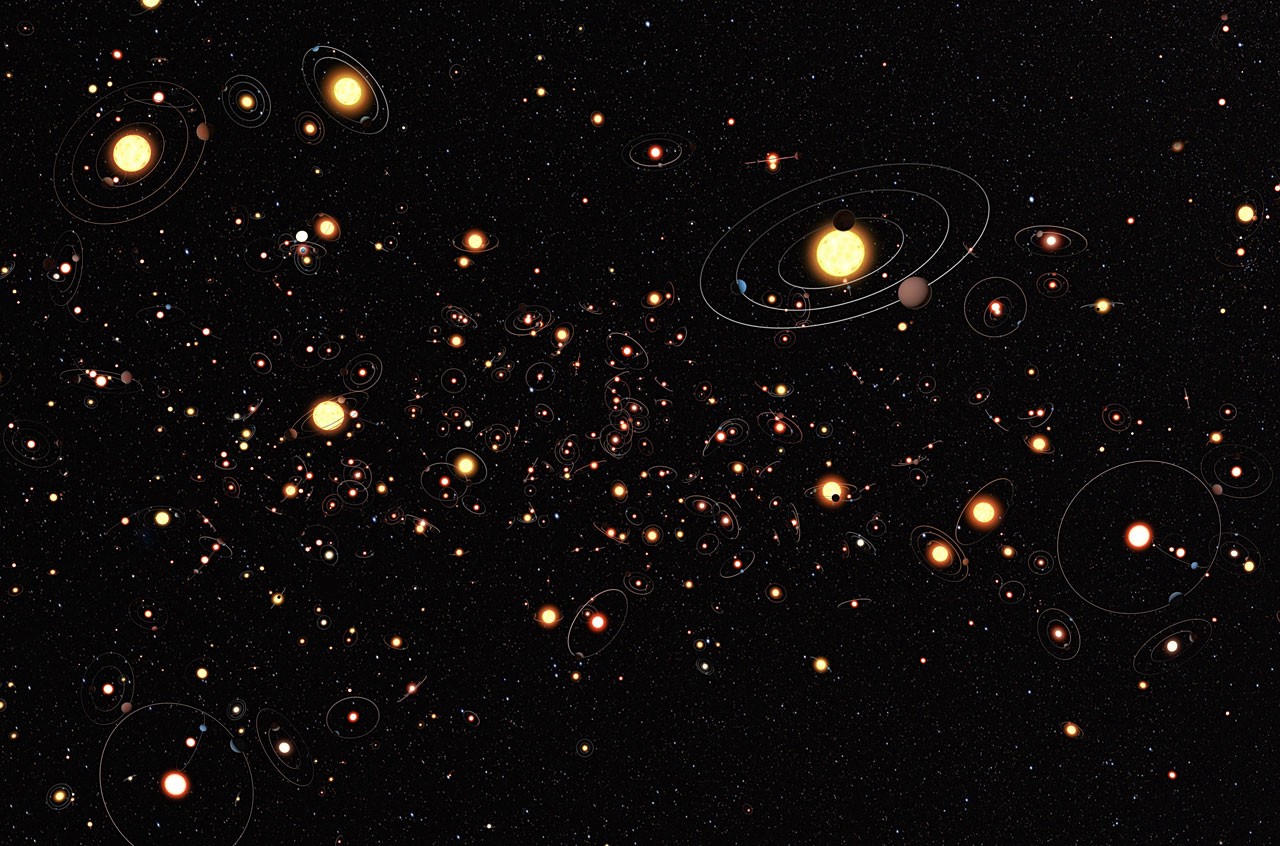
Credit: ESO/M. Kornmesser
The key to discovering a planet around another star is to cleverly pull out a signal that indicates its existence. At present, there are four main methods for discovering those planets, known either as extra-solar planets or exoplanets. Those methods include:
- the stellar wobble/radial velocity method, where we can detect the periodic motion of a star owing to the gravitational influence of a massive orbiting planet
- the transit method, where an orbiting planet periodically passes in front of its parent star, blocking the same fraction of its light each time it transits
- direct imaging, where we can sufficiently block the light from the parent star itself, revealing the sufficiently luminous planet(s) that revolve around it
- microlensing, where a massive object in interstellar space passes in front of a more distant, background star, causing it to temporarily brighten and then fade back down to its original luminosity
Although there are other methods that can also reveal planets, such as pulsar timing, these are the four most prolific methods in terms of already-discovered planets.
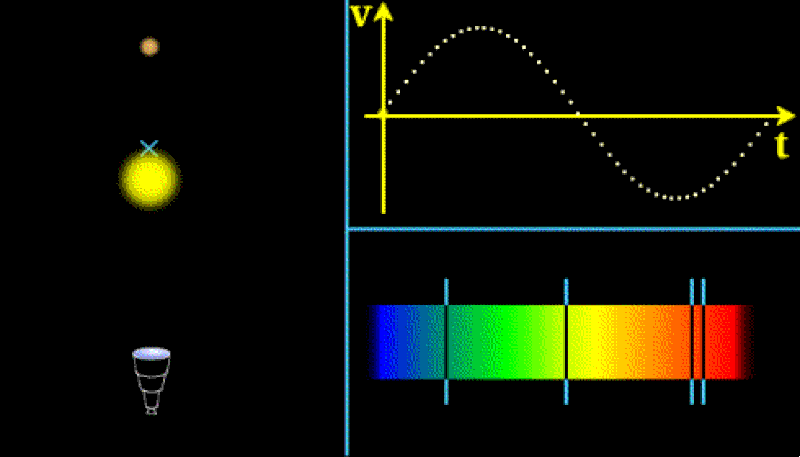
Credit: E. Pécontal
In the early days of exoplanet discovery, the stellar wobble method was by far the most prolific. As our ability to detect subtle changes in the observed wavelength ranges coming from a star improved, largely owing to advances in instrumentation, it suddenly became possible to measure even small differences in the periodic motions of a star. The physics behind why simple and familiar to anyone who’s ever heard the sounds of an ambulance or ice cream truck.
If you’re stationary and so is the sound-emitting vehicle that you’re listening to, you’ll simply hear the sounds at the same frequencies they were emitted at. However, if you and/or the sound-emitting vehicle are in motion, then that sound will be shifted:
- to higher frequencies, shorter wavelengths, and higher pitches, if you and the sound-emitter are relatively moving towards one another,
- or to lower frequencies, longer wavelengths, and lower pitches, if you and the sound-emitter are relatively moving away from one another.
The same exact physics is also at play with light. So, when a planet orbits a star, that star will periodically move toward and away from us, with its light being blueshifted and redshifted, periodically, in tandem.
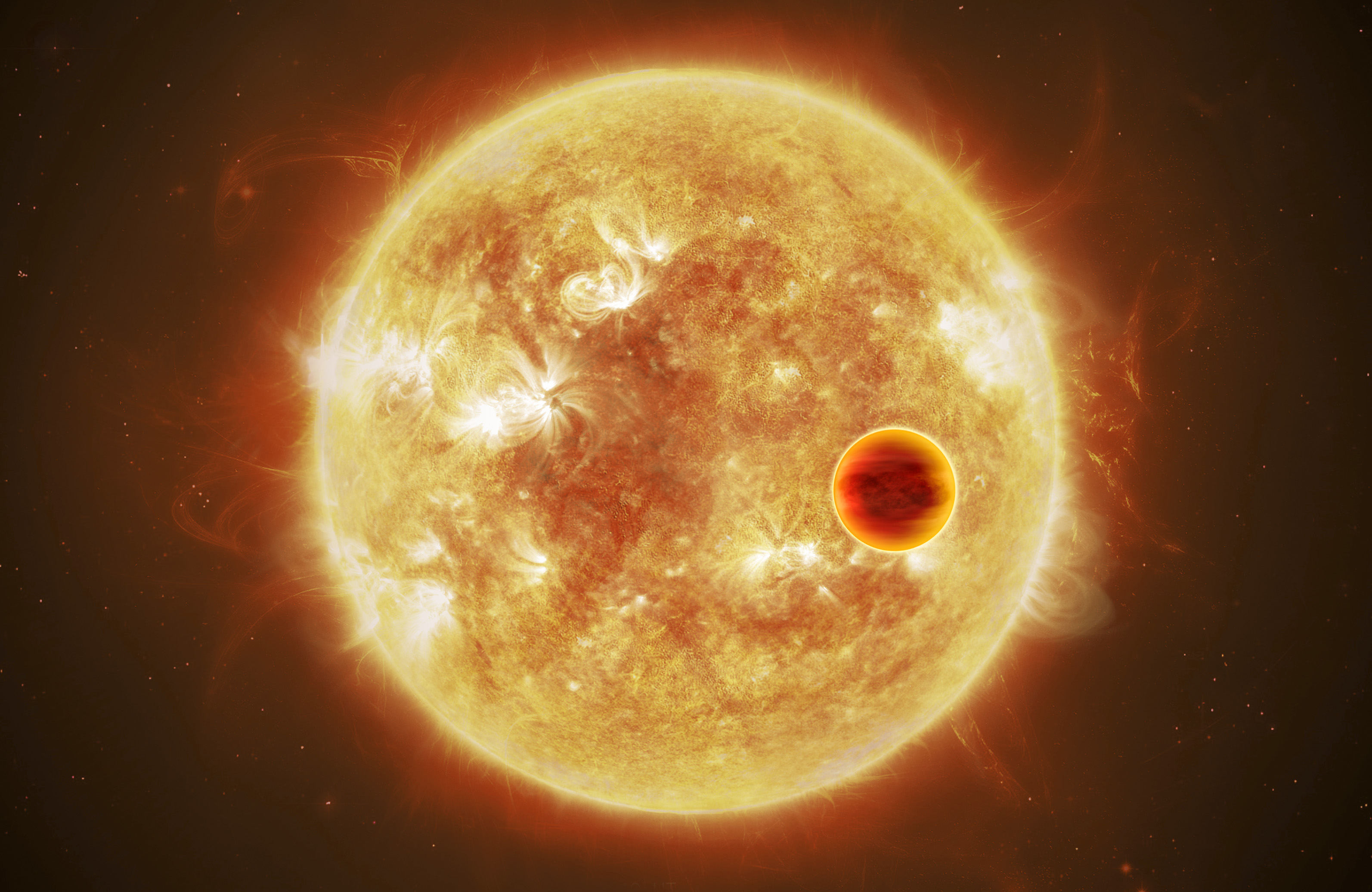
Credit: ESA/ATG medialab
Before NASA’s Kepler mission even launched, this method helped us detect our first significant number of exoplanets. But the planets we were finding weren’t anything like the planets we had anticipated were out there. Instead of finding analogues of our own Solar System, the overwhelming majority of the planets we found were:
- incredibly massive, being much heavier than even Jupiter,
- extraordinarily hot, completing a full revolution around their parent stars in mere days,
- and around relatively low-mass stars, where the ratio of the mass of the star to the mass of the orbiting planet is much smaller than the ratio of the Sun’s mass as compared to the Earth’s.
Although there were many who puzzled over this unexpected population of objects, it makes sense that these were the first classes of planets we discovered. After all, if you’re looking for new planets by observing stars and seeing how they wobble, you’re going to preferentially find the stars that wobble by the greatest amounts in the smallest amount of observing time.
In other words, we disproportionately detected the easiest types of planets that we could detect with the specific method we were using. We were finding “hot Jupiters” because hot Jupiters are the easiest class of planet to detect with the stellar wobble method. And hence, as soon as another method became available, we started to realize that though hot Jupiters existed, they weren’t the majority of planets out there at all.
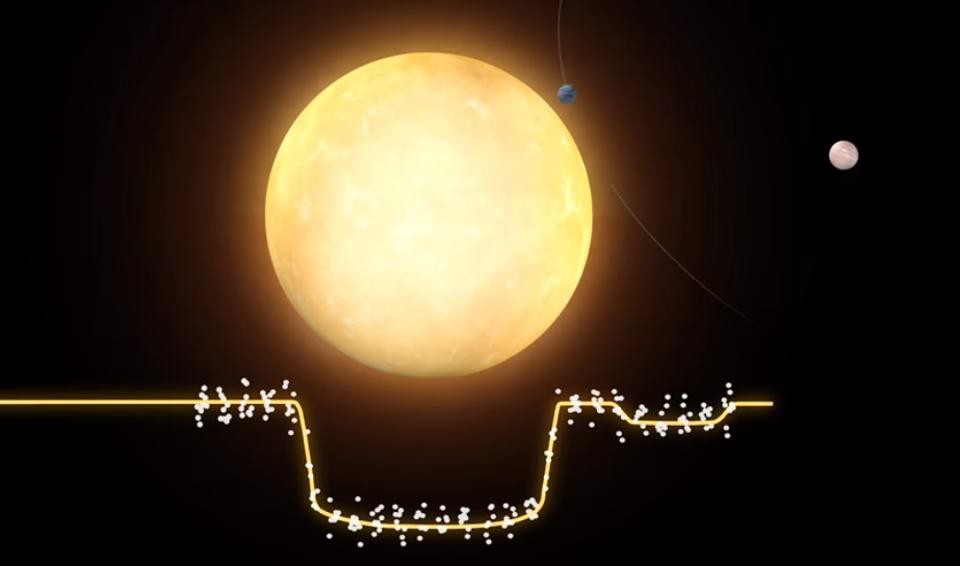
(Credit: NASA’s GSFC/SVS/Katrina Jackson)
Today, the majority of known exoplanets come from the transit method, and specifically, were discovered by NASA’s Kepler mission. By observing a tremendous number of stars — more than 100,000 of them — continuously for years at a time, scientists hoped to discover any stars that happened, from our perspective, to have orbiting planets that transited across the disk of their parent stars.
Each time they did, you’d see a slight but substantial dip in the flux from the parent star, equally across all wavelengths of light. And, if you saw the same transit happen multiple times with the same spacing, in time, between successive transits, you could then infer the orbital period and the radius of the planet in question. That would give you a planetary candidate, which you could then confirm via the stellar wobble method, which also reveals the planet’s mass.
This was an ambitious plan, but you could already see where this is headed. Ask yourself this: Which kinds of planets, around which kinds of stars, will be the easiest to detect via the transit method? Immediately, a few biases come to mind.
- It’s easier to find large planets than small planets, as they block a greater amount of light during a transit.
- It’s easier to find planets around smaller stars than larger ones, as the same sized planet would block a greater percentage of a smaller star’s light.
- It’s easier to find planets that are closer to their parent stars — with shorter orbital periods, and therefore, more transits in the same period of time — than planets that are farther away and orbiting more distantly.
- It’s easier to find planets that are close to their parent stars because you’re more likely to get a serendipitously good alignment between a star, planet, and ourselves if the planet is closer to the star than farther away.
When we look at the data, we see that’s precisely what we found.
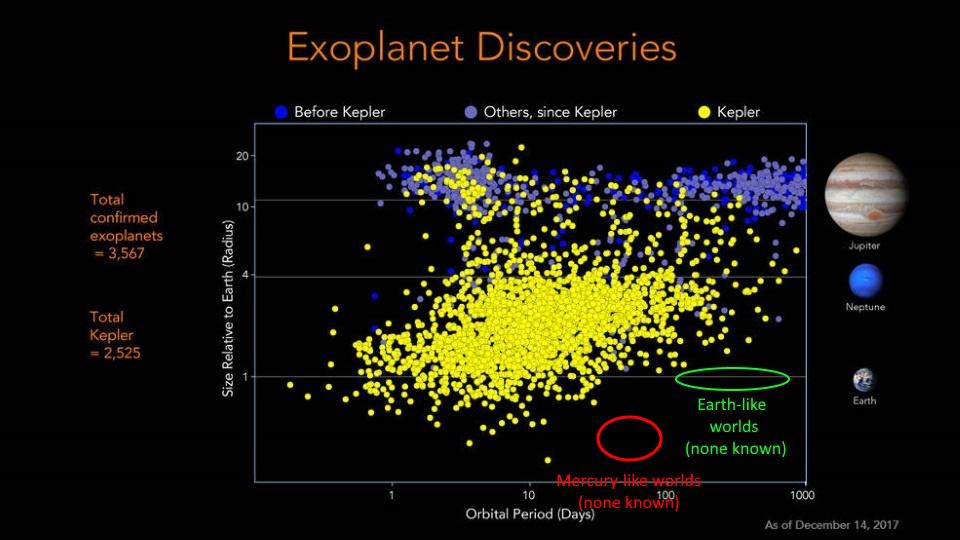
Credit: NASA/Ames/Jessie Dotson and Wendy Stenzel; annotated by E. Siegel
The overwhelming majority of planets found via the transit method are close to their parent star, are ~10% the radius (or, equivalently, ~1% the surface area) of their parent star or more, and are orbiting low-mass, small-sized stars. Even though Kepler only found planetary systems around ~3,000 of the more than 100,000 stars it examined, the odds of getting a detectable transit, simply based on geometry, has taught us that somewhere between 80% to 100% of all star systems are likely to contain planets.
But are the planets we’re seeing — the ones we’ve found so far — representative of all the planets that are out there?
At minimum, the data we’ve collected strongly suggests, “not necessarily.” Although Kepler and other transiting surveys are biased towards short-period planets that orbit very close to their parent stars, it’s very sensitive to planets that are at least a substantially large fraction of their parent star’s size. For a star like our Sun, for example, Kepler would be have been able to detect planets that were orbiting at the distance of Venus or closer, but not at the distance of Earth or farther. Additionally, at that distance, it could have definitely detected planets that were Jupiter-or-Saturn-sized, it could have probably detected Neptune-or-Uranus-sized ones, and it could have possibly detected ones about half the size of Neptune or double the size of Earth. Planets the size of Earth, Venus, Mercury, and Mars, however, would have been beyond the limits of Kepler’s sensitively.
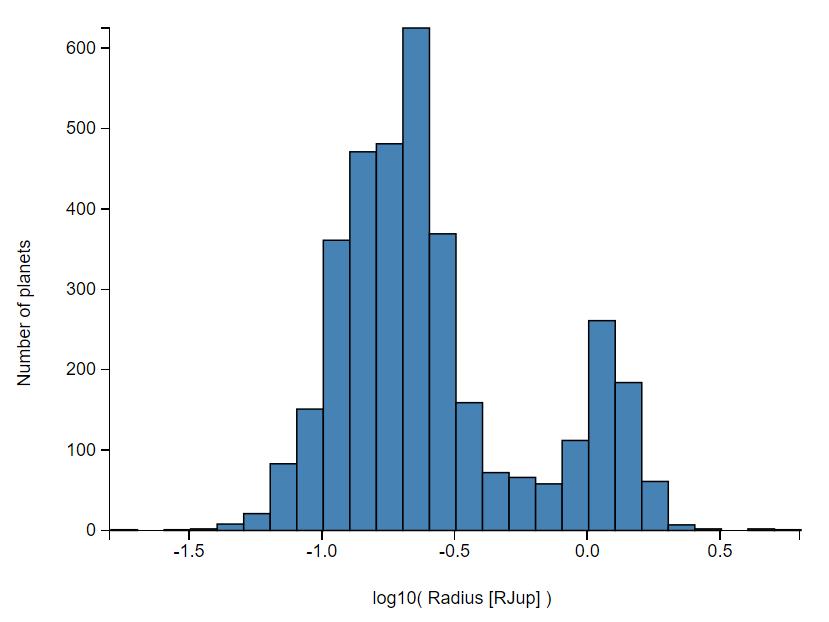
Credit: Open Exoplanet Catalogue
When we take a look at the planets we did find, we can see, from the graph above, that there are peaks and valleys in the distribution of planets.
- On the larger side, at about 0.0 on the graph’s x-axis, we find Jupiter-and-Saturn sized objects. There are lots of them, but not very many that are appreciably larger; an indication that gravitational self-compression becomes important around the mass of Jupiter, and remains important until nuclear fusion ignites in an object’s core.
- On the smaller but still large-and-familiar side, we come to about -0.5 on the x-axis, which corresponds to Neptune-and-Uranus sized objects. Interestingly, there aren’t a lot of objects in between Neptune/Uranus and Jupiter/Saturn; if you have a large envelope of hydrogen-and-helium gas, you’re either “Neptune-sized” or “Jupiter-sized,” but only a small number of examples exist of planets with in-between sizes.
- Earth and Venus-sized objects are way down at the -1.0 mark on the x-axis and just below; they exist, but these objects are really only detectable under the most serendipitous circumstances: where you have either a large number of transits (and hence, a very tight orbit) or an excellent alignment of these planets around only the smallest stars.
- But the majority of planets, as you can see, are somewhere between Earth-sized and Neptune-sized objects: between -1.0 and -0.5 on the x-axis. Somehow, these objects — colloquially named super-Earths — are the most common type of planet hitherto discovered.

You might be tempted into drawing conclusions about what this means for the total set and distribution of planets in the Universe, but as our question-asker has intuited, there’s no way we’re seeing the whole picture. The smallest planets are the most difficult to see, and the “Earth-sized and smaller” ones we’ve found represent only a few percent of the total number of planets found. We would need both longer observation times and greater sensitivity to small flux dips in order to reveal the majority of Earth-sized planets out there, so we can be certain we’re undercounting these terrestrial-like planets.
What we can’t be confident of, unfortunately, is how severe of an undercount we have today. It could be the case that these so-called “super-Earths” are actually more common than rocky, terrestrial-like planets, like the four we have in our inner Solar System, but it could also be the case that there are more Earth-sized planets than all other planet types combined. Until we have sufficiently unbiased data to work with, there’s simply no way of knowing.
I would assess, at present, that the community is presently split, with the majority suspecting that terrestrial-sized planets are at least as numerous as the so-called “super-Earths,” but a substantial fraction of exoplanets scientists also think otherwise. Again, without the decisive data, we can’t responsibly draw a definitive conclusion. Microlensing, especially with observatories like Euclid and Nancy Roman coming up in the future, has the potential to settle the debate, as that method is free of the biases that plague the transit method.
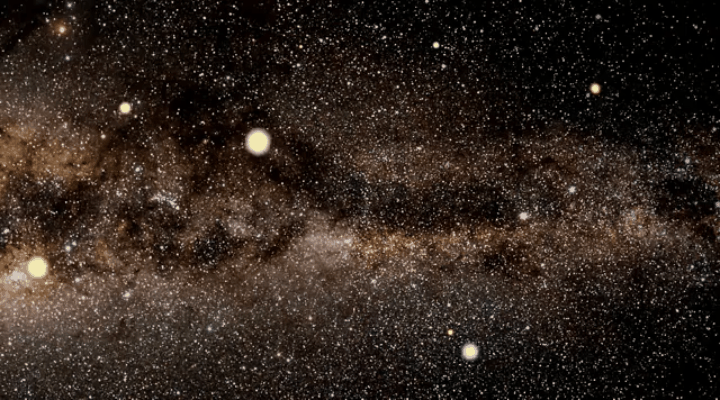
Credit: Jan Skowron/Astronomical Observatory, University of Warsaw
However, what we can definitively conclude is something that most people haven’t yet realized but that’s truly revolutionary: there really isn’t any such thing as a super-Earth planet.
Sure, we know there are planets that are larger than Earth and smaller than Neptune; nobody disputes that. We know that they’re more abundant than both Neptune-sized and Jupiter-sized objects, and they may or may not be more abundant than Earth-sized objects; we have a lot of science left to conduct to know for sure.
But here’s the kicker: you can only be a tiny bit larger than Earth and not acquire a substantial hydrogen-and-helium gas envelope. If you possess Earth-like temperatures or cooler, you can only reach a size that’s about ~20-30% larger than Earth before your gravity is great enough that you’d wind up with a thick envelope of volatile gases; you’ll become much more like Neptune than like Earth. If you get very close to your parent star, instead, you can get a little bit larger: maybe ~50-70% larger than Earth, as it’s easier to boil volatiles away, but even then you’re likely to only be an exposed, airless planetary core: similar to Mercury. By following the mass/radius relationship among planets, we see there are only three classes:
- terrestrial-like worlds, like the four inner ones in our Solar System,
- gas giant worlds without self-compression, like Neptune, Uranus, and Saturn,
- or gas giants with self-compression, like Jupiter.
That’s it.
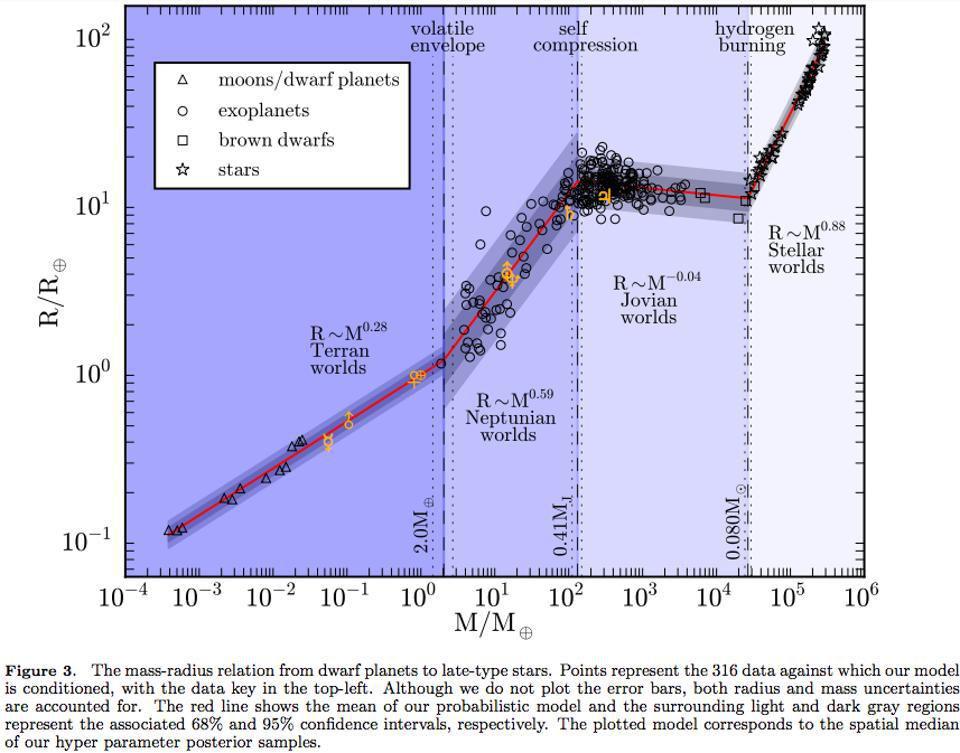
Credit: J. Chen and D. Kipping, ApJ, 2017
What this means for planets is remarkable. It means that the name “super-Earth” is, and has always been, a misnomer. You can only get very, very slightly more “super” than Earth, in terms of size and mass, before you transition to being a Neptune-like world. The overwhelming majority of the worlds we’ve found in-between the sized of Earth and Neptune are Neptune-like, rather than Earth-like, with volatile gas envelopes and solid planetary surfaces that are so far down beneath them that the atmospheric pressure down there is thousands of times what it is on Earth’s surface. If we have to call them anything, we should be calling them mini-Neptunes, not super-Earths.
But down at the lowest end of the planetary mass spectrum, the methods we’ve been using up until now to successfully find planets have a built-in bias against finding the planets we’re most diligently seeking to find. We fully expect that there are more rocky, terrestrial worlds out there in the Universe than we’ve found so far, but we lack the data to draw a convincing conclusion about whether they’re more-or-less numerous than the other types of planets we’ve discovered. It’s eminently possible that Earth-sized planets are the most numerous of all, and that even the planetary systems we’ve already found contain large numbers of them, all waiting for our detection capabilities to catch up.
It’s important to revel in what we know, but to retain your sense of wonder about what remains to be discovered. After all, the Universe has surprised us before, and with each new discovery, there’s a chance it could surprise us yet again.
Send in your Ask Ethan questions to startswithabang at gmail dot com!

